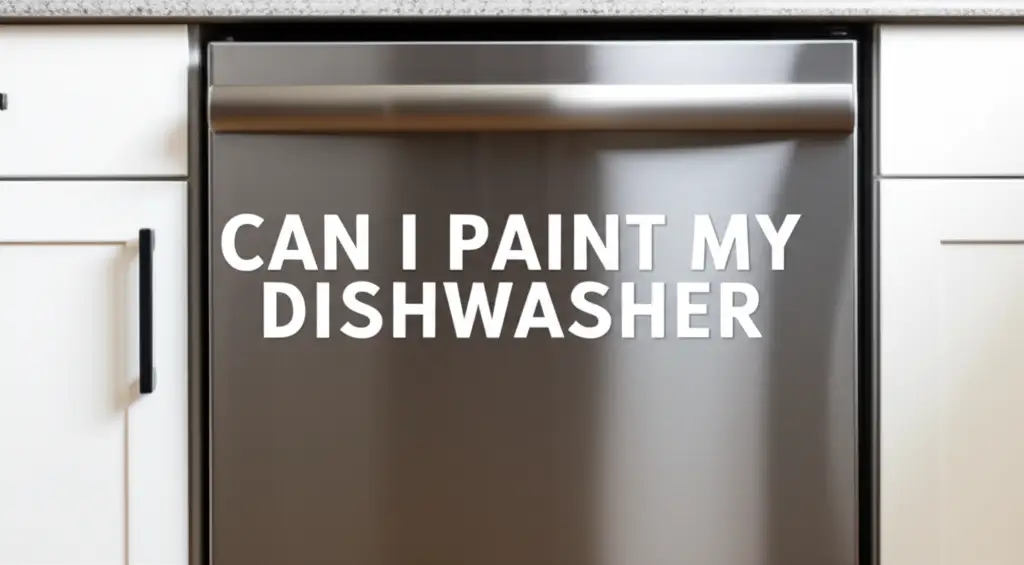· Tessa Winslow · Home Improvement · 15 min read
How To Fit Wine Glasses In Dishwasher

Mastering How To Fit Wine Glasses in Your Dishwasher
We all love a clean home. Sometimes, washing delicate items like wine glasses feels like a chore. Many people fear putting their fine stemware into the dishwasher. They worry about breakage or cloudy results. This fear often leads to tedious hand washing. I understand this concern well.
However, you can successfully fit wine glasses in your dishwasher. It saves time and effort. You just need to know the right techniques. This article guides you through the process. We will cover dishwasher design, loading strategies, and ideal settings. You will learn how to achieve sparkling, safe results every time. Say goodbye to handwashing and hello to convenience.
Takeaway
- Adjust your dishwasher racks for tall stemware clearance.
- Always use the top rack for wine glasses.
- Secure glasses using tines, clips, or dedicated holders.
- Select a gentle or delicate wash cycle with low heat.
- Use good quality detergent and rinse aid to prevent spots.
How do you fit wine glasses in a dishwasher without breaking them?
You can fit wine glasses in a dishwasher safely. Always place them on the top rack. Angle them downwards to prevent water pooling. Use adjustable tines, stemware holders, or rubber clips to secure them. This prevents movement and reduces the risk of breakage. Select a gentle wash cycle with low heat or air dry for best results.
Understanding Your Dishwasher’s Design for Glassware
Modern dishwashers offer many features for delicate items. Understanding these features helps protect your wine glasses. Look at your dishwasher’s interior. Many models have adjustable racks. Some also include special tines or holders designed for stemware.
Adjustable racks are a game changer. You can raise or lower the top rack. This creates more space for tall wine glasses. Check your dishwasher manual for instructions. Usually, you press a button or lift a lever on the side of the rack. This simple adjustment prevents glasses from hitting the spray arm. It also stops them from touching the top of the dishwasher.
Dishwasher tines vary in design. Some are fixed, while others can fold down. Flexible tines offer more loading options. You can position glasses between them for stability. Some dishwashers also feature dedicated stemware holders. These often look like small clips or soft rubber loops. They gently grip the glass stem. These holders keep your glasses firmly in place during the wash cycle.
Knowing these features allows you to optimize your dishwasher’s capacity. It also ensures the safety of your delicate stemware. I often adjust my top rack when I have a dinner party. This small step makes a big difference. It helps me clean all my glasses without worry. Pay attention to how your specific model works. This knowledge is your first step towards efficient, safe dishwashing for wine glasses.
Choosing the Right Rack for Your Wine Glasses
The choice of rack makes a significant difference for wine glasses. Most experts agree on one rule: always use the top rack. This decision protects your delicate stemware. The bottom rack exposes items to stronger water jets. It also has higher heat exposure.
The top rack provides a gentler wash environment. Water pressure is lower there. The heat is less intense. This reduces the risk of breakage or thermal shock. Thermal shock happens when hot glass meets cold water suddenly. It can cause cracks or shatters. The top rack minimizes this risk. This is why it is always recommended for delicate items. Many people ask, “Can glasses go on bottom rack of dishwasher?” While some sturdy glasses might survive, it is never recommended for wine glasses. Fine crystal and delicate stemware are particularly vulnerable to the harsh conditions of the bottom rack. Placing wine glasses here risks damage, even if they appear robust.
Another reason for the top rack is spacing. The top rack often has tines spaced closer together. This design better cradles the stems and bowls of wine glasses. You can angle them for optimal cleaning and drying. They drain better when angled. This prevents water spots. It also ensures proper rinsing inside the bowl.
I always advise my friends to use the top rack. It has saved countless wine glasses from damage. It is a simple habit that offers great protection. Check your dishwasher manual for specific top rack configurations. Some models even have dedicated areas or attachments for stemware. Using these features correctly helps ensure your wine glasses emerge sparkling and intact.
Smart Loading Techniques for Diverse Stemware Shapes
Loading wine glasses correctly is an art. Not all wine glasses are the same. You might have tall flutes, wide Burgundy bowls, or standard Bordeaux glasses. Each type needs a slightly different approach. Correct placement prevents breakages and ensures thorough cleaning.
Start by angling your glasses. Place the opening of the glass facing downwards. This allows water to enter and drain properly. It also prevents water from pooling inside the bowl. Water pooling leads to spots or incomplete cleaning. Ensure the glasses do not touch each other. Contact during the wash cycle can cause chipping or cracking. The vibrations from the dishwasher are strong. Even slight contact can lead to damage. Give each glass enough breathing room.
For tall champagne flutes, use the adjustable top rack. Lowering the top rack provides needed clearance. If your dishwasher has stemware holders, use them. These holders secure the base or stem of the flute. This stops them from tipping over. If you lack special holders, position flutes between the tines. Make sure they lean securely against a sturdy part of the rack.
Wide-bowled glasses, like those for Burgundy or Pinot Noir, need extra space. Their large bowls can be tricky. Position them so the bowl does not obstruct spray arms. Make sure they do not block other dishes. Again, avoid contact with neighboring items. If you have a specific stemware holder, it will cradle the stem. If not, use the tines to create a secure pocket for the bowl. I often rotate the glasses slightly until they feel stable. This ensures they stay put.
Always double-check placement before starting the cycle. A quick visual scan can prevent mishaps. Proper loading maximizes cleaning power and protects your valued stemware. It takes a moment longer but saves you from broken glass.
Securing Wine Glasses: Preventing Breakage During Wash Cycles
Preventing breakage is a top concern when washing wine glasses in a dishwasher. Wine glasses are fragile. Movement during the wash cycle is the biggest threat. Secure placement is key. Luckily, several tools and techniques help achieve this.
Many dishwashers offer specific features for securing stemware. Some models have foldable tines. You can fold these tines down. This creates a flatter surface. You can then lay glasses almost horizontally. This method works well for very tall glasses. Other dishwashers have soft-grip clips or rubberized holders. These small attachments grab the stem of the glass. They hold it firmly in place. Look for these features in your dishwasher. They are designed to prevent movement.
If your dishwasher lacks these built-in features, accessories are available. You can purchase universal stemware holders. These are often flexible silicone or plastic frames. They clip onto your existing dishwasher rack. They cradle the bowl and stem of the glass. These holders stabilize the wine glasses. They stop them from wobbling or tipping over. Some come as long strips that hold multiple glasses. Others are individual clips.
Another simple trick involves using rubber bands. This is a DIY solution for securing glasses. You can wrap a rubber band around the stem of a glass. Then, attach the other end to an adjacent tine. This creates a gentle tension. This tension helps to hold the glass upright. Be careful not to use too much force. The goal is stability, not compression.
When loading, ensure no glass touches another glass. Vibrations from the wash cycle can cause them to knock together. Even slight contact can lead to chips or cracks. I always leave a small gap between each wine glass. This small effort prevents damage. Checking the security of each glass before starting the cycle is a good practice. It provides peace of mind.
Optimal Dishwasher Settings and Detergents for Crystal Clear Results
Choosing the right dishwasher settings and detergents is crucial. It ensures your wine glasses come out sparkling clean. Wrong choices can lead to cloudy glasses or even damage. Your dishwasher likely has several wash cycles. For delicate stemware, always opt for the gentlest one.
Look for settings like “Delicate,” “Glassware,” or “Light Wash.” These cycles use lower water temperatures. They also have less intense water pressure. High temperatures can cause thermal shock. This makes glasses brittle or creates permanent cloudiness. Lower water pressure reduces the risk of glasses shifting or breaking. If your dishwasher has a “heat dry” option, turn it off. Air drying or using a “no heat” dry option is better for glass. Excessive heat can etch glass over time. It can also leave water spots.
The type of detergent you use matters. Choose a high-quality dishwasher detergent. Some detergents are specifically designed for glassware. They may contain ingredients that prevent spotting and film. Avoid harsh, abrasive detergents. They can scratch or etch the surface of your delicate wine glasses. You might wonder if you can use dishwasher liquid in dishwasher. The answer is no; regular dish soap creates too many suds and can damage your machine. Always use detergent made for dishwashers.
Rinse aid is also your friend. This product helps water sheet off surfaces. It prevents water droplets from drying on the glass. Water droplets leave behind mineral deposits. These cause cloudy spots. Add rinse aid to your dishwasher’s dispenser. It ensures a streak-free, sparkling finish. If you still get cloudy glasses, learning how to clean cloudy glasses from the dishwasher can help. Sometimes, a vinegar rinse can help too. Adding vinegar in dishwasher to clean is an effective way to combat hard water spots and residue, leaving your glasses clearer. I always use a rinse aid, and my glasses consistently come out beautifully.
Common Mistakes to Avoid When Washing Delicate Stemware
Putting wine glasses in the dishwasher can be very convenient. However, certain mistakes can lead to breakage or cloudy results. Knowing these pitfalls helps you protect your valuable stemware. Avoiding them ensures a perfect wash every time.
One common mistake is overloading the dishwasher. It is tempting to cram as many dishes as possible. However, this is detrimental to wine glasses. Overloading causes items to touch each other. As the dishwasher vibrates, these contacts lead to chipping or breaking. It also prevents water and detergent from reaching all surfaces. This results in poor cleaning. Always leave adequate space around each wine glass.
Using the wrong wash cycle is another error. Selecting a “Heavy Duty” or “Pots and Pans” cycle for wine glasses is a big mistake. These cycles use high heat and powerful water jets. High heat can cause delicate glass to crack. It can also lead to etching or permanent cloudiness over time. Powerful jets can knock glasses over. Always choose a “Delicate,” “Glassware,” or “Light Wash” setting. This protects the integrity of the glass.
Ignoring the heat dry setting is also a frequent oversight. Many people leave the “heated dry” option on by default. The intense heat from this setting can harm wine glasses. It can cause thermal shock. It also contributes to water spots and etching. Always turn off the heated dry cycle for delicate stemware. Let the glasses air dry. Alternatively, you can open the dishwasher door after the cycle finishes. This allows steam to escape and promotes air drying.
Mixing different metal types with glassware is also not ideal. Silverware or other metal items can scratch glass surfaces. Place silverware in its dedicated basket. Ensure no metal objects can come into direct contact with your delicate wine glasses. I learned this lesson the hard way once. A metal spoon shifted and chipped my favorite wine glass. Now, I am extra careful about separating items.
Lastly, using too much or the wrong type of detergent can cause problems. Excess detergent can leave residue. Using hand dish soap instead of dishwasher detergent creates excessive suds. This can damage your dishwasher and leave a film on your glasses. Always use appropriate dishwasher detergent in the correct amount.
Beyond Washing: Drying and Storing Wine Glasses for Lasting Brilliance
The wash cycle is only one part of caring for your wine glasses. Proper drying and storage are just as important. They ensure your glasses maintain their sparkle and stay protected. Neglecting these steps can lead to water spots, dust, or even breakage.
After the dishwasher cycle finishes, avoid the heated dry option. As discussed, heat can harm delicate glass. Instead, open your dishwasher door immediately. This allows steam to escape. It promotes air circulation. Air drying is the safest method for wine glasses. Let them sit in the dishwasher for at least an hour. This allows most of the water to evaporate naturally. You might notice some lingering water droplets.
For truly sparkling, spot-free results, a quick hand polish is best. Once the glasses are dry to the touch, use a clean, lint-free microfiber cloth. Specialized polishing cloths for glassware work wonders. They remove any faint water spots or streaks. Hold the glass by the bowl, not the stem, when polishing. This reduces stress on the stem. Gently rub the entire surface of the glass. This step takes little time but makes a big difference in appearance.
Proper storage protects your wine glasses from dust and damage. Store them upright in a cabinet. Storing them upside down can trap stale air. It can also cause the rim to chip. If you stack glasses, ensure they are designed for stacking. Most wine glasses are not. Stacking can cause pressure points and lead to breakage.
If you have limited cabinet space, consider a stemware rack. These racks hang upside down. They often fit under existing cabinets or shelves. This saves space. It also keeps glasses dust-free. Make sure the rack is sturdy. Ensure it can support the weight of your glasses. I installed one in my kitchen. It not only saves space but also beautifully displays my wine glasses. Proper drying and storage ensure your wine glasses remain beautiful and ready for your next occasion.
Frequently Asked Questions
Q1: Can I put expensive crystal wine glasses in the dishwasher? A1: Yes, you can put most crystal wine glasses in the dishwasher. However, extreme care is necessary. Use a delicate or glassware cycle. Turn off the heated dry option. Place them securely on the top rack. Hand washing remains the safest option for truly antique or hand-painted crystal. Always check the manufacturer’s care instructions first.
Q2: How do I prevent water spots on my wine glasses? A2: Preventing water spots requires a few steps. Always use a good quality rinse aid in your dishwasher. This helps water sheet off the glass. Ensure you turn off the heated dry cycle. Allow glasses to air dry. For stubborn spots, a final polish with a lint-free microfiber cloth works well.
Q3: Is it safe to use dishwasher pods for wine glasses? A3: Yes, most modern dishwasher pods are safe for wine glasses. Choose pods that advertise a gentle formula. Ensure the pod fully dissolves during the cycle. Always place the pod in the dispenser. Do not throw it directly into the dishwasher. Use the recommended amount for the wash.
Q4: What if my wine glasses are too tall for the top rack? A4: Many dishwashers have adjustable top racks. Check your manual to see how to lower yours. This often creates the necessary space. If your rack is not adjustable, or glasses are still too tall, handwashing may be necessary for those specific items. Avoid forcing them into the space.
Q5: Can I wash wine glasses with other dishes? A5: Yes, you can wash wine glasses with other dishes. Just ensure they are not touching other items. Hard plastics or metals can scratch glass. Leave enough space between each item. Use the appropriate gentle cycle for all items in the load. This prevents damage to your delicate stemware.
Q6: Why do my wine glasses get cloudy after dishwashing? A6: Cloudiness can result from hard water, etching, or detergent residue. Hard water leaves mineral deposits. Etching is permanent damage from high heat or harsh detergents. Use rinse aid and a gentle cycle. Consider a water softener if you have very hard water. If cloudy, try soaking glasses in white vinegar.
Conclusion
Fitting wine glasses in your dishwasher is completely possible. You can achieve sparkling results without fear of damage. We have covered key strategies. You learned about understanding your dishwasher’s features. We discussed the importance of the top rack. Smart loading techniques prevent contact and breakage. We also explored ideal settings and detergents for crystal clear stemware.
Remember these simple guidelines. Adjust your racks. Use the top rack. Secure your glasses. Select a delicate wash cycle. Turn off the heated dry option. These practices will protect your wine glasses. They will also save you time and effort. I hope this guide helps you feel more confident about dishwashing your delicate stemware. Enjoy your sparkling clean wine glasses. Cheers to easier cleanups!





